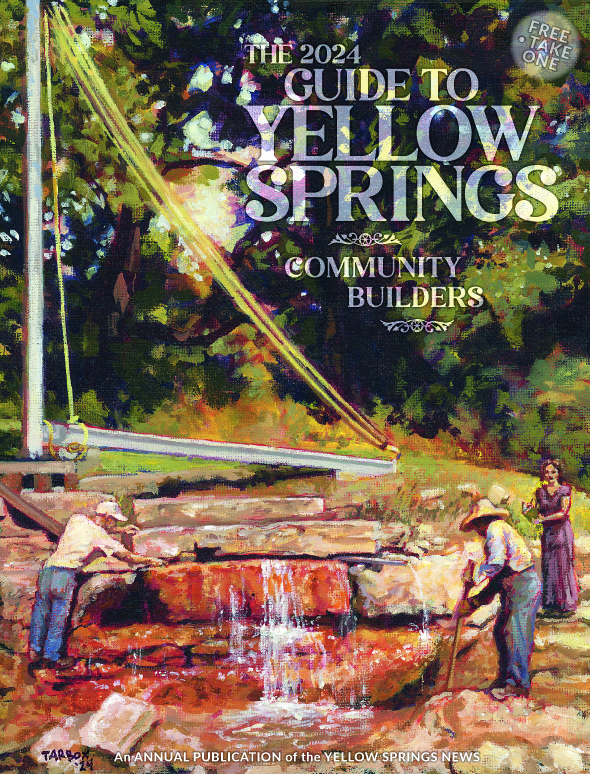Antioch College’s ‘Happy crisis’ continues
- Published: February 16, 2012
The recent “happy crisis” of Antioch College going viral on the Internet with its offer of a tuition-free education took center stage at the college’s Board of Trustees meeting last weekend, with leaders discussing how to respond to the unexpected national and international attention.
“The challenge is not over. Not even close,” Antioch College president Mark Roosevelt said at the meeting on Saturday, Feb. 4. Roosevelt emphasized that while the sudden publicity presents the college with considerable challenges, the overall impact is likely to be extremely positive.
“I believe that, when the story of the Antioch College re-creation is written, this will be one of the seminal events,” Roosevelt said.
The Antioch College story went viral on Friday, Jan. 27, almost two weeks after the board sent out a press release that announced that the college would continue offering its tuition-free Horace Mann scholarships for the next three incoming classes. A CBS reporter noticed the press release, conducted an interview with Admissions Director Cezar Mesquita, and on Jan. 27 posted a story on the CBS “Moneywatch” Web site under the headline, “How to get a $106,000 education for free,” acccording to Jennifer Jolls, the college’s assistant director of communications, who made the presentation. Mesquita was not at the board meeting due to illness.
The Antioch College story then appeared on the popular Yahoo! News Web site, along with the college and front pages of Huffington Post, and the Web sites of Slickdeals, The Daily, College Solutions, College Confidential, Cafe Mom, Fox 45 in Dayton, the Columbus Dispatch and Financial Advisors, among others. The Yahoo story was recommended by 19,000 people on their Facebook page, and 639 people commented on the story.
In response, the Antioch College Web site, which generally receives about 500 visitors a day, had 53,000 visitors on Jan. 27, causing the Web site to crash. (It’s up and running again, according to Jolls). College staff scrambled to take advantage of the attention even without a functioning Web site, Jolls said, contracting with a telephone answering service to handle overflow calls, identifying spokespersons for the college, and putting up static pages on the Web site that directed visitors to the college’s Facebook page.
As a consequence, the college has had almost 6,000 applications submitted by Friday, Feb. 3, Jolls said. Before the publicity, the college had received about 100 applications for its 75 openings this fall.
Roosevelt complimented the college communications and admissions staff for their handling of the massive influx of inquiries and applications.
“In the end, competence matters enormously,” he said, stating that college employees addressed the unexpected event with “no panic, but a lot of calmness and problem solving. I was so proud of our people and how they handled this.”
Roosevelt recommended that regardless of the huge volume of applications, the college continues to seek only 75 new students in the fall, given the limitations of the newly re-opened college.
However, college leaders should carefully consider areas of potential growth that the avalanche of new applications might reveal, he said.
“There’s a lot of attractive older student applications,” he said. “I think there’s potential richness there.”
To handle the large volume of applications, the college is hiring temporary staff and bringing in volunteers, Jolls said. The communications staff is also preparing itself for renewed media attention on Feb. 15, when applications are due, and March 15, when the college notifies prospective students of their status. They are also upgrading to a “more robust Web site,” hiring an on-site Web master and continuing to engage prospective students through Facebook. The admissions staff is planning additional options for campus visits and anticipating a jump in last minute applications before the Feb. 15 deadline, she said.
Credit for the suggestion to extend the tuition-free scholarships goes to Roosevelt and Mesquita, according to new board chair Frances Horowitz.
“Congratulations to Mark and Cezar on the brilliance of this idea,” she said.
Fund-raising uptick
The continuation of the tuition-free scholarships is possible because fundraising has been going well for the college, according to Vice President for Advancement Steve Sturman in his presentation to the board.
“There’s real momentum behind Antioch College,” he said.
Contributions to the college’s Annual Fund are up about 60 percent compared to last year this time, Sturman said, with $1,292,627, or about 72 percent, having been raised toward the June 30 goal of $1.8 million. The boost is linked to strong alumni support, according to Sturman, who said that December 2011 was the largest single month of alumni giving since the college’s 2009 independence.
Total gifts to the college — which include large one-time gifts, bequests, prior pledge donations and gifts in kind — are $4,375,303 so far this year, an increase of 17 percent in total gifts compared to last year, Sturman said.
The advancement office plans a new project soon to build on the fund-raising success, Sturman said. That project involves the college “partnering with generous donors” in a March mailing aimed at alums who haven’t donated before, with the large donors offering 3:1 matches to the new donors. The project’s goal is $1 million in combined Annual Fund and challenge gifts to the college, he said.
The advancement office also is working hard to connect with all college alumni, and is updating and improving its database. It’s also planning 16 alumni events and chapter meetings this year, and anticipates that 300 alums will travel to Yellow Springs for the annual June reunion, Sturman said.
Lots of job applicants
The first crop of students for the renewed college had a successful first quarter, according to Vice President for Academics Hassan Rahmanian during his report to the board.
“Both on the quantitative and qualitative side, students are doing very well,” he said.
Specifically, more than half of the 35 students had grade point averages of 3.5 or better, he said, and average GPA ranged from 3.1 to 3.67.
The college is using grades to assess progress for the first time because the college is required to do so in its effort to become officially accredited, Rahmanian said. However, the college’s traditional narrative evaluations are also used, and faculty leaders are cautious to not emphasize grades too much.
“We are trying to find a balance so that grades don’t become the dominant mode of learning,” he said.
The largest challenge for students is finding enough time to attend class, do homework, perform a job and participate in college community events, according to Rahmanian, who said that students in a typical week are spending about 70 hours on those activities combined.
“The experience is exhilarating and exciting and sometimes overwhelming,” he said.
In the college’s first two quarters, it offered students 17 foundation courses and two global seminars, with the six full-time faculty supplemented by five adjunct faculty.
The college is in the process of searching for six new tenure-track faculty members, for positions in history, psychology, media arts, biomedical science, environmental science and co-operative education, he said.
The application process for these positions, which ended Jan. 31, attracted a robust response, according to Rahmanian. There were 167 applicants for the history position, 55 for psychology, 64 for media arts, 55 for biomedical science, 46 for environmental science and 21 for co-op education. Committees of faculty, former faculty, outside experts and students will continue to work on the search process, and will bring finalists to campus in March, he said.
The board also heard a presentation by faculty members Sara Black, an artist, and Kristin Adler, an anthropologist, on the global co-op on food that they are team-teaching this quarter. The course is an overview of issues relating to food, including food in relation to culture, science, psychology, history, politics and socio-economics. The board heard a presentation by students Meg Miller and Rachael Smith on their research project last fall for the first global seminar, which focused on water. The two researched the environmental and economic effects of hydraulic fracturing, or fracking.
The Yellow Springs News encourages respectful discussion of this article.
You must login to post a comment.
Don't have a login? Register for a free YSNews.com account.















No comments yet for this article.